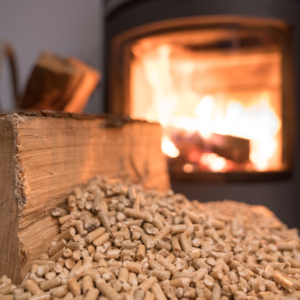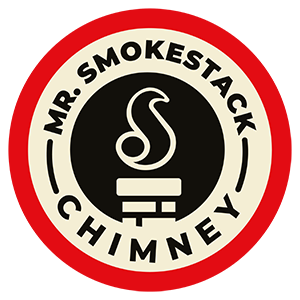Do you know the difference between a fireplace, a stove, and an insert? If not, don’t worry – you’re not alone. A lot of people don’t know the difference, or they assume that all three are essentially the same thing. That said, there are some pretty big differences among these three heating appliances, and we’re here to help you decide which one is the right fit for your home.
What Are Fireplaces?
Fireplaces are probably the best-known among the three, and while they come in a range of fuel types, the two most common are wood-burning and gas. Wood-burning fireplaces are exactly what they sound like – they’re designed to burn wood. Gas fireplaces use natural gas or propane to create a flame, and are known for their efficiency and ease of use.
Pros of Fireplaces
✓ They’re cozy & inviting. One of the best things about fireplaces is that they create a warm and inviting atmosphere. While many other heating appliances can accomplish this too, there’s nothing quite like a traditional fireplace setup.
✓ They increase home value. Fireplaces are known for increasing the resale value of a home. If you’re planning on selling your home in the future, a fireplace is a good investment that’s often on future homebuyer’s wish lists.
✓ They can help lower heating bills. Many use their fireplace to heat their home, so they can turn down the heat and looking forward to lower energy bills – without compromising on the warmth and comfort of your space.
Cons of Fireplaces
✗ Installation isn’t typically a breeze. Fireplaces can be expensive to install or build into your home. Of the three appliance options we’re laying out here, having a fireplace put in will probably put the biggest dent in your bank account.
✗ They don’t have placement flexibility. Because fireplaces are such big and showy centerpieces, they can’t be installed in small or awkward spaces. You’ll likely have one or two options for placement.
✗ They aren’t the most efficient. Another downside to fireplaces is that a lot of heat is typically lost out of the chimney. They can help you lower bills if used correctly, but won’t be as efficient at it as a stove or insert would be.
What Are Inserts?
 Inserts are placed into an existing fireplace. They’re typically made of metal and have glass doors in the front. Most fireplace inserts use natural gas or propane as their fuel source, but some may also be wood-burning, if that’s fuel type you prefer.
Inserts are placed into an existing fireplace. They’re typically made of metal and have glass doors in the front. Most fireplace inserts use natural gas or propane as their fuel source, but some may also be wood-burning, if that’s fuel type you prefer.
The main purpose of an insert is to improve the fireplace’s efficiency without compromising on the overall look and aesthetic of the appliance. Many fireplace inserts are also equipped with a blower, which helps circulate heat throughout the room.
Pros of Inserts
✓ They increase energy efficiency (and keep your bills lower). The most significant advantage of fireplace inserts is that they help increase the energy efficiency of your fireplace. They fit snugly inside your fireplace opening, which in turn helps to create a tighter seal, meaning more heat in your home and less need to crank the heat up.
✓ They pour more heat into your space. As we touched on above, fireplace inserts seal tighter than a traditional setup meaning more heat in your space. Most fireplace inserts also have a blower that circulates the heated air throughout your home.
✓ They make fuel conversions easier. If you’re looking to switch from wood to gas, then an insert may make for an easier transition. Simply have your new gas insert installed into your current wood fireplace, and then enjoy the added convenience and heat.
Cons of Inserts
✗ They’re less traditional. If you’re hoping for that totally authentic and traditional fireplace look and sound, then an insert doesn’t always deliver as well as a traditional fireplace. That said, a wood-burning insert can still offer the best of the both worlds – ask us about your options!
✗ Higher installation costs.While inserts offer a lot of energy savings over time, the upfront installation costs can sometimes take a toll if you’re on a tighter budget. If you already have a fireplace, making this upgrade may not make the best financial sense unless you have some funds already built up.
What Are Stoves?
 Stoves are stand-alone heating units that come in a variety of styles, colors, and sizes. They can be powered by electricity, natural gas, propane, or wood, and some models are even designed to burn coal. Homeowners love them for their flexible placement options and they’re great heat output.
Stoves are stand-alone heating units that come in a variety of styles, colors, and sizes. They can be powered by electricity, natural gas, propane, or wood, and some models are even designed to burn coal. Homeowners love them for their flexible placement options and they’re great heat output.
When most think of a new heating appliance, a stove isn’t the first thing that comes to mind, but these are actually growing quite a bit in popularity during recents years and homeowners realize their many benefits.
Pros of Stoves
✓ Compared to fireplaces, stoves produce more heat. One of the main advantages of stoves is that they typically produce more heat than open fireplaces, making them more efficient. They’re also known for radiating heat back into your home more effectively. That means both cost savings and a cozier aesthetic.
✓ They’re easy to operate and regulate. Most stove models come with a built-in thermostat that regulates the temperature, so you can easily keep your space at an even and comfortable temperature.
Cons of Stoves
✗ They get hot on the outside. Wood stoves are known for getting hot, so you’ll need to be cautious near the body of the unit – especially if you have young kids or pets. You’ll also need to be sure nothing combustible is within 36 inches of the stove, as this could be a fire hazard.
✗ High initial installation costs. Stoves are known for being rather costly up front, which may not be ideal for those with a more limited budget.
Count On Mr. Smokestack for Professional Installation Services
If you’re interested in a fireplace, insert, or stove installation, it’s best to trust a professional. The team here at Mr. Smokestack specializes in installing and maintaining a wide range of appliance and fuel types, so we’re certain we can help out with whatever you’re interested in.
Still not sure what’s best for your space? Reach out! We can help you choose the best option for your home and budget. Contact us today to schedule a free consultation – with us, you know the job will be done right.
